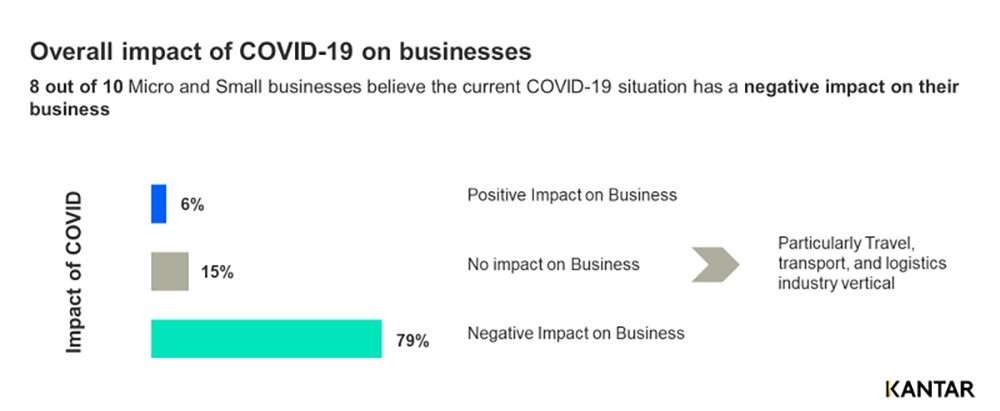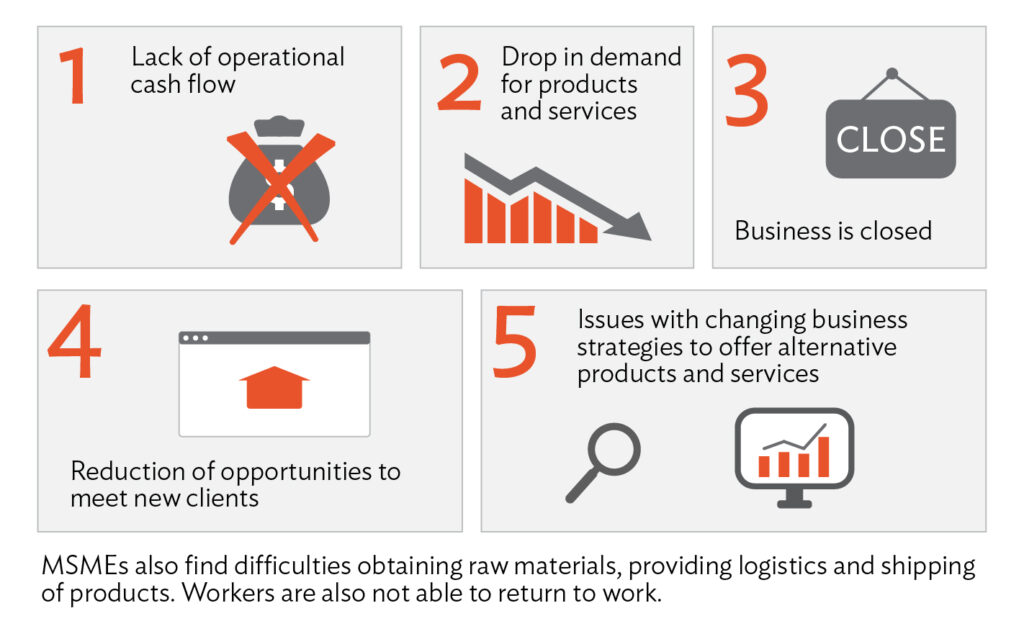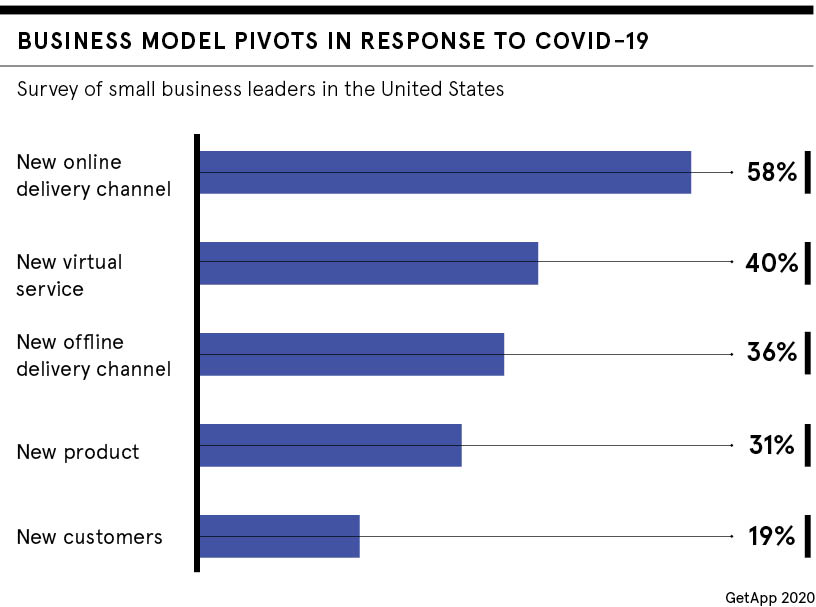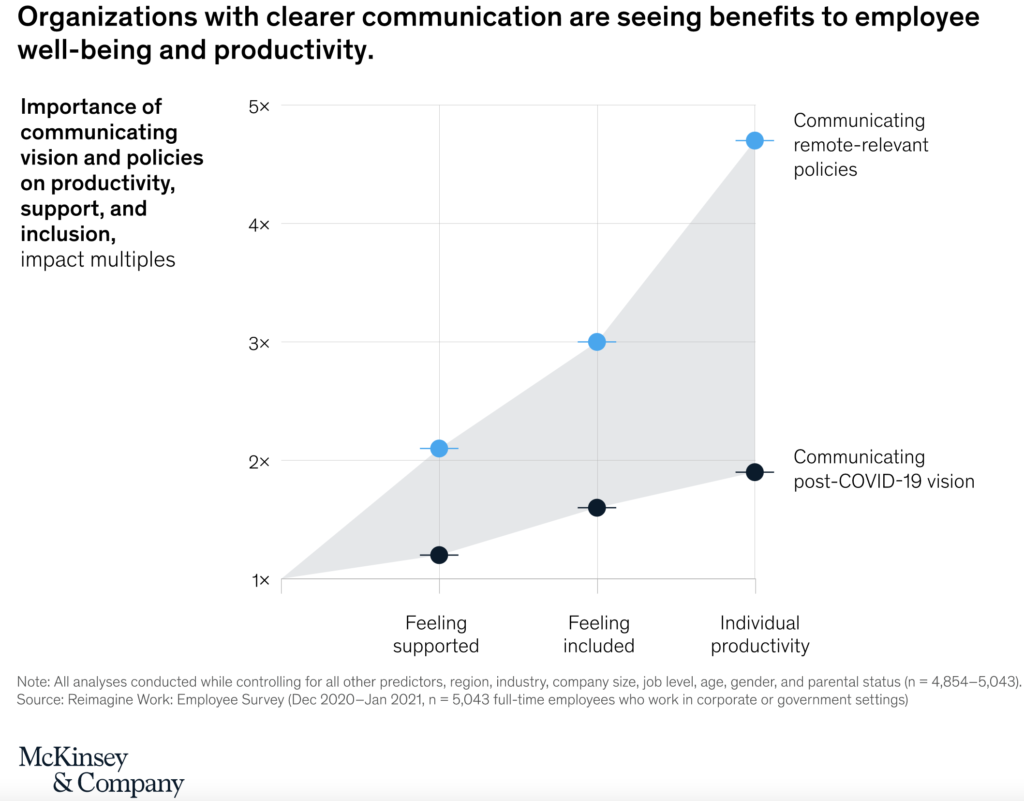
Sometimes, it’s easy to overlook the contribution of the smaller parts in an enormous machine like the national economy. That can be accurately said for the small businesses that have shown an incredible strength to carry weights far greater than their own through these uncertain times.
In our country, micro, small and medium enterprises (MSMEs) are the second-largest employers, after agriculture. Employment in the sector skyrocketed from 23.9 million to nearly 111 million from the year 2000 to 2020. They collectively contribute almost one-third of our total gross domestic product.
And with 99% of all the businesses in India falling under this category, it’s no doubt that they’re considered to be the backbone of the economy, an important cog in domestic and global value chains and one of the key driving forces of industry.
Impact of the Pandemic

Ever since the global pandemic arrived on our shores just over a year ago, over 82% of small businesses have been negatively affected. Some issues they’ve faced include interrupted raw material procurement, liquidity crunches, massive labour migrations and severe disruptions in supply chains.

But it’s during this lowest of lows that MSMEs stepped up their game by pivoting and innovating with incredible resolve and resilience.

Strategies to Add to Your Business Continuity Plan
What are some of the key strategies that MSMEs continue to adapt to survive through this second wave of cases in the country? Let’s take a look:
1) Keeping up communications
Perhaps most importantly, setting consistent, clear and responsible expectations for the ongoing second wave will help all your customers and employees stay in the loop and strengthen all of your business relationships.
We recommend regularly updating your employees about any recent changes in policy or safety precautionary measures. Similarly, keeping your customers and clients informed of your ongoing situation–for example, if your business is shutting down, operating at a reduced capacity, or transitioning to fully remote–is of paramount importance.
Some avenues to share this information are across your social media handles, your website, through local newspapers or even the radio.
This frequent and honest communication will further help put your business’ essential stakeholders- the customers, clients, and employees – at ease and remain faithful to you.

2) Developing new revenue streams
At times of disruption, it’s crucial to think creatively and come up with out-of-the-box solutions. If the future of your current business model is impossible in face of the pandemic restrictions, how will you continue to seamlessly fulfill your customers’ needs?
Many small businesses started using WhatsApp and other digital platforms to continue selling their products to customers and creating additional revenue streams on the way.
Another example of smart pivoting was when small businesses, including alcohol companies, began producing hand sanitizers to meet their growing demand.
Switching operations over exclusively to e-commerce channels is another widely followed strategy by small businesses. To help them, they’ve joined forces with tech-driven logistics service providers offering paperless and contactless operations. This move resulted in uninterrupted work and streamlined home deliveries for the businesses.

3) Leveraging New Age Marketing Tools
The pandemic pushed traditional small businesses, including local kirana stores, to step up their online presence and adapt to newer ways to reach existing and new customers whose behaviour was swiftly shifting online.

After establishing your presence, we’d recommend learning how to optimize and grow by staying engaged online with personalized communications.
According to reports, 60% of MSMEs have weathered the storm and reduced the stress to their systems by adopting digital sales channels, and 40% have witnessed significant growth in sales.
Digital marketing is not only cost-effective but measurable, too. Analytics ensure you glean valuable insights into your marketing efforts and make timely adjustments accordingly.
Looking ahead

To be clear, while the second wave remains a grave concern to us all, most of corporate India is still optimistic that measures taken by the government last year and the Union budget will act as the building blocks required to push growth forward.
Because of significant restructuring and countries diversifying their supply away from China, millions of MSMEs in India face the great opportunity of being fully integrated into the global supply chain.
And if GoDaddy’s 2020 Global Entrepreneurship Survey is to be believed, over 60% of those surveyed were confident that their business will continue running, despite slowdowns brought on by the pandemic.
To ensure you reach the right customers at the right time via channels they’re already on, create customized ad campaigns with HT Media’s digital news properties. With our finger firmly on the collective pulse of India, our websites bring in more than 139 million unique visitors. Find out more about partnering with us here.
Ready to take your brand to the next level? Connect with us today to explore how HT Media can amplify your presence across our diverse portfolio of 25+ brands and properties. Let's turn your brand vision into reality!


















Comment